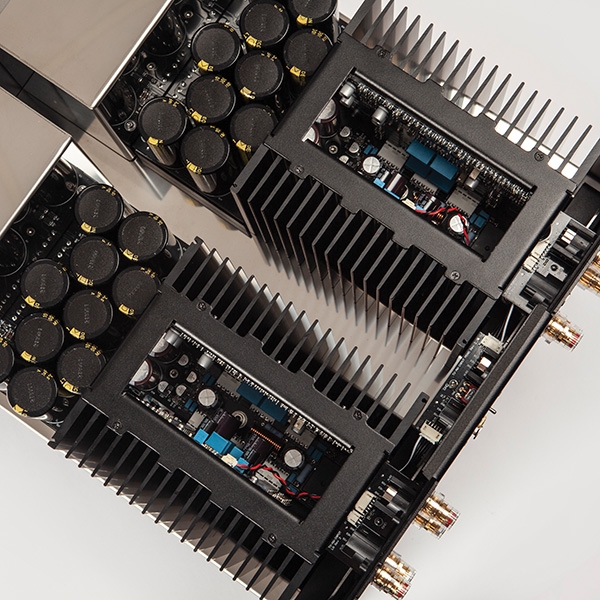HiFiMan Ananda Review: Double the Sundara?2024

Introduction
I previously reviewed the HiFiMan HE400se and Sundara as a starting point for learning about planars. Today I’ll be examining the Ananda to wrap up the trilogy. It is the final “normal” HiFiMan headphone before we go into the high end of the kilobuck spectrum, and it costs $700. The HE400se/Sundara/Ananda progression is probably the most appropriate model for most individuals searching for their first pair of planars, but HiFiMan does offer a few other intriguing models as well, like the HE6 (and its variations) or HE560.
Surprisingly, the Ananda has an oval cup shape that resembles those of their more expensive models, the Susvara, HE1000, and Arya. This contrasts with the Sundara, the HE400se, and the notorious HE6, which have round cups. It appears that the cups’ form may represent a design philosophy for whatever signature HiFiMan thinks is suitable for a certain model, rather than merely an aesthetic choice. Aside from my theoretical thoughts on headphone design, what is the Ananda’s sound quality? Please read the Sundara review first, since I will be comparing it to a great extent in this one!

What’s in the box?
The Ananda’s unboxing is a further improvement over the HE400se or Sundara. This time, below the other cover, is a stylish flip-top box encased in elegant imitation black leather. It appears that HiFiMan is committed to providing quality care for their high-end devices. What comes with the Susvara is beyond my imagination. A bottle of champagne, perhaps?
In terms of construction, the Ananda and Sundara share the same big, hanging headband and metal yokes. Sadly, the oval cups are composed of plastic. a little letdown after Sundara, to be honest. To put it mildly, the two cords that are supplied are peculiar. These consist of a flexible beige hollow tube that encases the left and right single-core wires, which end in 3.5 mm gold-plated metal jacks. The first is a 3 m long version, while the second is a 1.2 m short cable.
I find the Ananda to be quite pleasant for extended listening sessions in terms of both comfort and usefulness. With no headband pressure, it is lightweight. But the cups are huge. You may want to check to make sure it fits if your head is really tiny. The Ananda also lets in audio leakage. A great deal. Naturally, some leakage is to be expected with an open earphone, but with the Ananda, the leaking is nearly as loud on the outside as it is within the cups. What you’re hearing will be audible to everyone in the room.
Sound
The Ananda initially sounded a lot like the Sundara, with the exception of a peakier lower treble and a more articulate bass response. However, as I continued to listen to it over the ensuing weeks, I became aware of a few advantages that the Ananda offers, including more resolution, better staging, and a more subdued tone. Remarkably, the Ananda doesn’t use as much power as the Sundara or HE400se.

HiFiMan Ananda measurement using a GRAS 43AG measuring apparatus that is industry standard. The Harman target, a reference frequency response created with customer preferences in mind, is shown by the dotted black line. The headset in question measures, as shown by the blue line. This effectively illustrates the degree to which the frequency response of the headphones deviates from the target. However, take note that the objective is extremely softened, so a headphone’s sound quality does not depend on closely adhering to the Harman target.
Bass
These HiFiMan planar headphones share a common characteristic in that their bass graphs are all rather comparable. Though they each have their own small quirks, they all produce a clean, controlled sound and a reasonably flat response. The notes of the HE400SE were dampened. The Sundara added a degree of aggression and weight. In contrast, Ananda is eloquent and laid-back. The bass’s onslaught of notes is a little softer than the Sundara’s, and it lacks depth of sound.
However, the Ananda easily defeats the Sundara in terms of resolution. The bass has a smooth coherency that brings out the subtleties in between the bottom notes and separates sounds with ease. Particularly the bass guitar has a deftness about it. Very impressive; however, bear in mind that there is a trade-off in lower note weight.
Mids
The voices’ utmost transparency and clarity are the main goals of the upper mids tuning. The Ananda’s superb ability to cleanly identify and separate singers in the soundstage, however, comes at the expense of some vocal body, which may make leading vocals seem thin and a touch disembodied. Having said that, this is a small-tone problem that disappears with some brain burn in. Stringed instruments, such as violins and vocal harmonies, are masterfully performed and seamlessly integrated into compositions without sacrificing their unique voicings. The Ananda has a softer tone in the mids than the Sundara, which I like in this case since it counteracts the mids’ more delicate timbre.

Treble
In the triple. Ananda trips and falls. The good news is that it eliminates the Sundara’s brittleness and subdues the fiery treble notes that were interspersed with them. It appears to contain a couple massive triple peaks, which is terrible news. Although the Ananda tends to sound less sharp than the Sundara, when notes do hit these peaks, they do so with a dazzling flash of intensity. The most noticeable examples of this are the hats and cymbals, which stand out and are emphasized by the Ananda. Similar to this, Ananda has more noticeable voice sibilance. Consider it this way: the treble response of the Sundara is dotted with numerous small micro-peaks.
These little peaks in the Ananda are filled in with one or two huge peaks. Aside from the peaks, the Ananda’s treble is the greatest of the three, exhibiting clarity and vividness that are unmatched by the HE400se or Sundara.
Presentation
It sets itself apart in the way the Ananda is presented. The stage of the Ananda sounds really open. For instance, the sound of the cups would vary significantly if your hands were covering them. However, this does not always imply that the soundstage is unnecessarily large. It lessens the “in-your-head” sensation since it more strongly influences how I perceive the music.
As a result, the soundstage sounds naturally spacious and open. Furthermore, despite Ananda’s plenty of high mids drive, the vocals are less stage front than one might anticipate, adding a pleasing feeling of stage depth. Despite the modest stage height, horizontal imaging is really good. Although there isn’t much of a difference between the Ananda and Sundara in terms of resolution, instrument separation, and layering, I think the Ananda is superior technically and has a more natural sound when handling music.
If my memory serves me well, it even slightly outperforms the Focal Elex in terms of resolution for the price. I think Ananda’s overall staging and presentation are particularly good for the following reasons:. My only little criticism is that the Ananda’s dynamic ability isn’t significantly better than the Sundara’s.

Should you buy it?
Yes, if you’re seeking more resolution and soundstage. It is clear that the Sundara represents the best value in terms of both price and performance when compared to the HE400se and Ananda. At $700, the Ananda doesn’t really provide a significant enough improvement in sound quality to justify spending twice as much as the already fantastic Sundara. However, decreasing returns always work like that. You alone can decide if you’ll be willing to pay more for the changes this evaluation has emphasized. Personally, I love headphones that have a lot of staging and resolution, and the Ananda excels in both of those areas.
It does, however, have certain drawbacks. In particular, compared to the Sundara, there are softer attacks, sharper treble peaks, and thinner mids. As a result, I believe the Ananda is a better alternative than the Sundara and would choose it if you could find it on sale for under $500.
I would combine the Sundara and Ananda if I could. Combine the mid/upper treble of the Ananda with the bass, mids, and lower treble of the Sundara. Combine the Sundara’s ferocity and assault with the Ananda’s staging and resolve for a technically impressive performance. That would be fantastic. Since every upgrade from the HE400se to the Ananda has so far brought about little but noticeable improvements, it’s possible that the Arya or Susvara represent the pinnacle of HiFiMan headphones. But even with its few shortcomings, I’ll still enjoy some music with Ananda till then.







